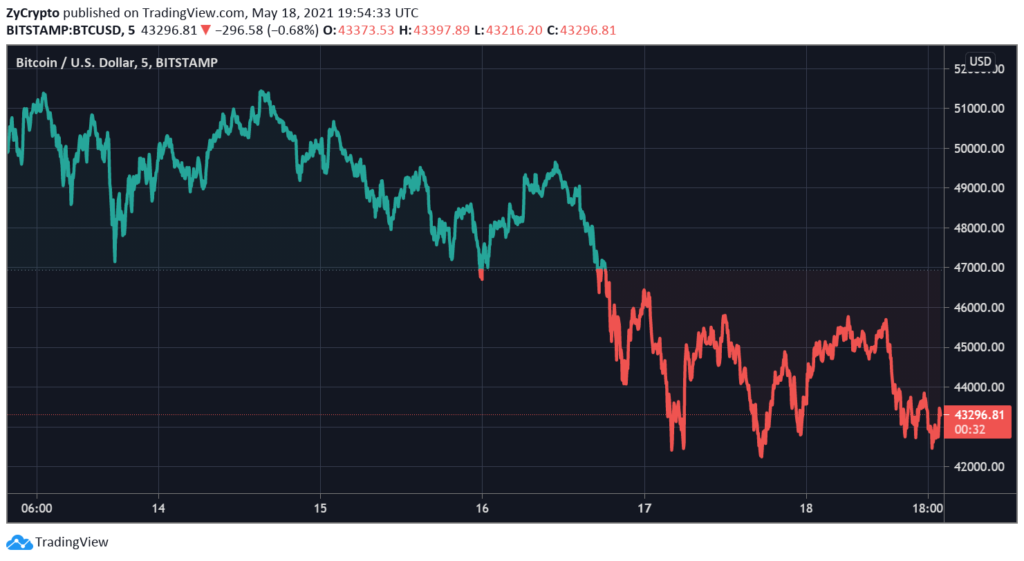Using past data, technical analysis helps to predict the movement of the market and helps investors and traders spot buying opportunities on different occasions.
However, long-term cryptocurrency investors will agree that technical analysis isn’t the full package. Although market psychology can be reflected in the charts and hint at the potential movement of prices, it falls short in the face of fundamental analysis, which many analysts consider to be more insightful as it dives into the major events capable of sending prices to higher highs and lower lows.

This week, the market suffered a major setback from Tesla’s consequential reveal, and since then, the market has been moving sideways. Prior to this, the charts were attractive enough for analysts’ to predict that Bitcoin would not stay within the $50,000 range for too long.
However, with the new development, the opposite has become the case. Going forward, it would be crucial to note the key factors that direct the Bitcoin market beyond the technical charts.
Institutional Investment Interest
In 2017, investors would have argued that institutional money could not fund Bitcoin enough to get it to its all-time high of $19,834 as of that time. Their points are valid, because retail investors were more invested in the Bitcoin market, while institutions remained skeptical and held firm to their money.
With retail buyers driving prices to the highest price levels in 2017, it was expected that the culture would carry on through the years ahead. But as Bitcoin gained credibility globally, institutions began to pay more attention, and now, Bitcoin is a preferred choice among some of the biggest institutions.
When institutions like MicroStrategy, Tesla, Nexon, and the likes purchase Bitcoins worth billions, it reinforces the asset’s dominance and influences market sentiments. In the same manner, their exit is likely to hit the market hard, communicating that perhaps, the asset is not as reliable.
This was the case with Bitcoin over the past week. On-chain analyst William Clemente who had previously opined that Bitcoin would not go below $50,000, after studying on-chain activities, quickly backpedaled on his stances after the bloodbath began, saying:
“Yes, I said we wouldn’t go below 50k. Not running away from it. Everyone keeps sending me screenshots of my tweet and that’s cool, I expect to be called out.
Didn’t know Elon would tweet something like that but it’s all good, I was wrong. Not losing any sleep over it. Peace.”
Network Performance
Back in 2018, when Craig Wright and Roger Ver began to clamor for two different versions of Bitcoin Cash, which was forked from Bitcoin, the network rivalry caused Bitcoin to lose 10% instantly and drop to $5,390, a new yearly low for the asset, proving that network complications are powerful enough to suppress even the most valued cryptocurrency.
Meanwhile, the Ethereum network has firsthand shown the importance of a strong network base for cryptocurrencies, as the strength of their network is crucial to their survival. With different projects switching from Ethereum to Binance Smart Chain, adoption for the latter platform increased significantly as interest rates from Asian companies looking for a cheaper substitute to Ethereum entered the market.
Should the Bitcoin blockchain fall short of its competitors, Bitcoin’s price value could drop as market players search for a new alternative.
Regulatory involvement
When regulators begin to probe into digital assets, the market has a tendency of safeguarding their funds by converting to a different cryptocurrency, in case of any future loss.
This was the case for Ripple (XRP) earlier this year when investors, exchanges, and investment platforms boycotted the asset. If Bitcoin happens to find itself in a situation like this, investors might find it difficult to access the asset, while market FUD intensifies as the way forward remains unknown. The end product could be reflected in a dwindling price value.







